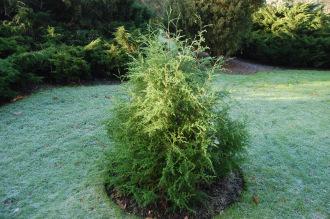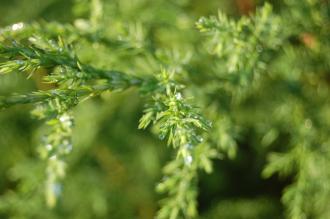
Juniperus procera (30/12/14, Kew Gardens, London)
Position: Full sun to partial shade
Flowering period: Early Spring
Soil: Moist, well drained
Eventual Height: 30m
Eventual Spread: 12m
Hardiness: 9a, 9b, 10a, 10b, 11
Family: Cupressaceae
Juniperus procera is a long lived, evergreen tree with an irregular conical to rounded crown. Its grey/ green leaves appear in two forms, juvenile and adult. Its juvenile leaves are sharp, needle like and up to 15mm long. Its adult leaves are scale like and up to 3mm long. Its trunk may achieve a diameter of up to 1.5m. Its bark is red to pale brown with longitudinal fissures, peeling in long strips. This tree is usually monoecious, is wind pollinated and are not self fertile. Its male flowers are pollen cones, light brown and up to 3mm long. Its blue/ black fruit are a berry like seed cone, are globose and up to 8mm across.
Juniperus procera, commonly known as African Juniper, African Pencil Cedar, East African Juniper or East African Cedar, is native to the mountainous areas of (mostly) east Africa and the Arabian Peninsula. In its native habitat it grows in forests at an altitude of 1100m to 3500m.

Juniperus procera Leaf (30/12/14, Kew Gardens, London)
The etymological root of the binomial name Juniperus is derived from the old Latin name for the Juniper tree. Procera is from the Latin meaning ‘tall’.
Juniperus procera is little used by the landscape architect in the UK. It is an important timber tree in east Africa.
Ecologically, Juniperus procera seed cones are attractive food for birds and mammals. Its structure provides shelter for birds.
Juniperus procera prefers moist, fertile, well-drained soils. It will tolerate most pH of soil.
Juniperus procera requires little maintenance.

